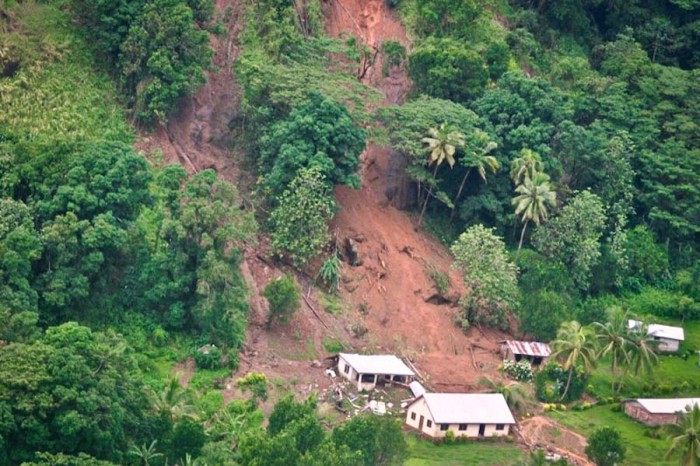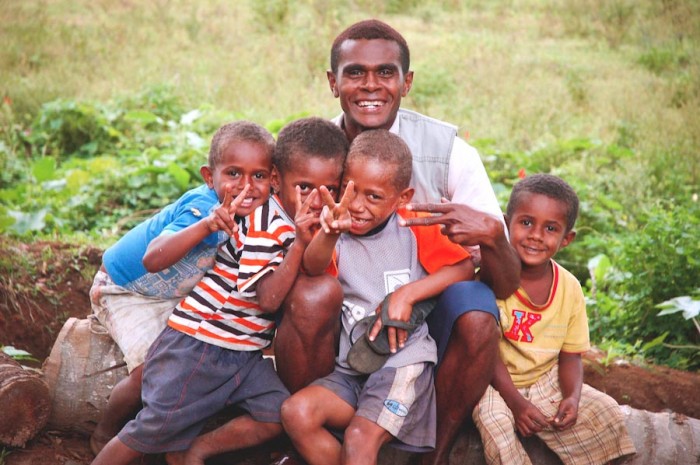
“There is no Plan B, because we do not have a Planet B,” UN Secretary General Ban Ki-moon said as he set the stage for the UN Climate Summit taking place in New York City today. He’s invited world leaders, from government, finance, business, and civil society to come together in hopes that they can agree on on actionable measures to address a warming world.
Despite the ample evidence seen in sea level rise, Arctic melting and flooding throughout the U.S. and around world, there’s still a disconnect for many to understand and accept climate change, and we’re not just talking about oil executives or suburbanites driving gas guzzling SUV’s.
The Pacific Islands might be seen as the “canaries in the mine” — the most vulnerable places in the world to climate change. In fact, activists from the Pacific are largely featured at this week’s conference.
Remote communities in the Pacific have reached a critical transition point, with traditional knowledge and skills no longer effectively addressing environmental changes caused by climate change and capitalism. Although economies are slowly growing and developing in the Pacific, remote interior communities are still largely left off the development grid.
So why is climate change so hard to believe in or connect to?
Through our organization’s work with remote communities in Fiji, we have begun to shed some light on this global phenomenon of disbelief and disconnection.
From September through December 2013, we traveled to 101 houses, sheds, and kitchens in the interior of Fiji’s main island conducting a baseline study in the remote Yakete District. We sat and listened, asking a lot of questions and hearing a lot of stories. There were some surprises in our data, as well as some correlations and patterns that we had anticipated. However, sometimes it is what is not said that brings the most reflection. The one phrase we never heard during our baseline visits was “climate change.”

In Fiji, climate change issues vary beyond just the rising sea levels we have come to expect. Shifting weather patterns also threaten mountain ridge communities in highlands. For example, one of Yakete District’s nine villages, Tururaki Village had to be disbanded due to landslides that killed a family. Water quality in communities once renowned for their pure, precious water has deteriorated so severely lives are now threatened.
These tragedies and impacts are all profoundly linked to climate change. Nevertheless, outsiders consider shifting weather patterns more of a threat than do community members themselves.
In Yakete District, our baseline study revealed that only 4.7% of the entire district has graduated from high school. Communities lacking very basic needs like access to medical care or affordable education aren’t going to have very open ears for such seeming trivialities as ecological concerns, especially when you’re talking about the theoretical problems coming in the future.
In traditional iTaukei culture, there is no actual word for climate change. In other words, there is no traditional knowledge from the past with which to address the issue. Climate change is a problem of the present and the future. This new generation of land-owning communities needs to be raised with the ability to see ahead, and to anticipate the struggles they may face. Education is the only way to achieve this.
We believe good development work is not just about building up the capacity of a target communities, but also listening and learning about how communities are seeing their needs. If the actual communities most deeply affected by climate change in our world don’t see it as an immediate issue, while the existing paradigm of climate change does not address the human needs of these communities, the result will be failed mitigation projects.
What lessons learned from our work in Fiji can be used to approach this daunting yet unfamiliar issue facing for the world?
One way our organization is taking on this issue is to promote a more relevant education model that mainstreams climate change across a variety of subject areas through “project-based learning.” Project-based learning promotes the connection between what students are studying in their textbooks and their natural environment to make their learning more relevant and meaningful.

Instead of students in the mountain ridges of Fiji reading about protecting coral reefs they’ve never seen, they can take their classroom outside and work on restoring and protecting their local stream banks. Instead of students reading about nutrition, they can plant a variety of indigenous crops on school farms and learn about nutrition, sustainable land management and soil erosion.
The point is to make a connection every day through education, so we raise a new generation of land-owning communities and stewards of Fiji’s natural resources.
Climate change does and will continue to impact us all. Whether it’s the place you live, the food you eat, the bills you pay. There is no way to escape our links to the natural environment.
Communities around the globe need to be encouraged to see and understand these links for themselves — that it’s about them and the choices they make through their every day actions to become “climate change ready.”

